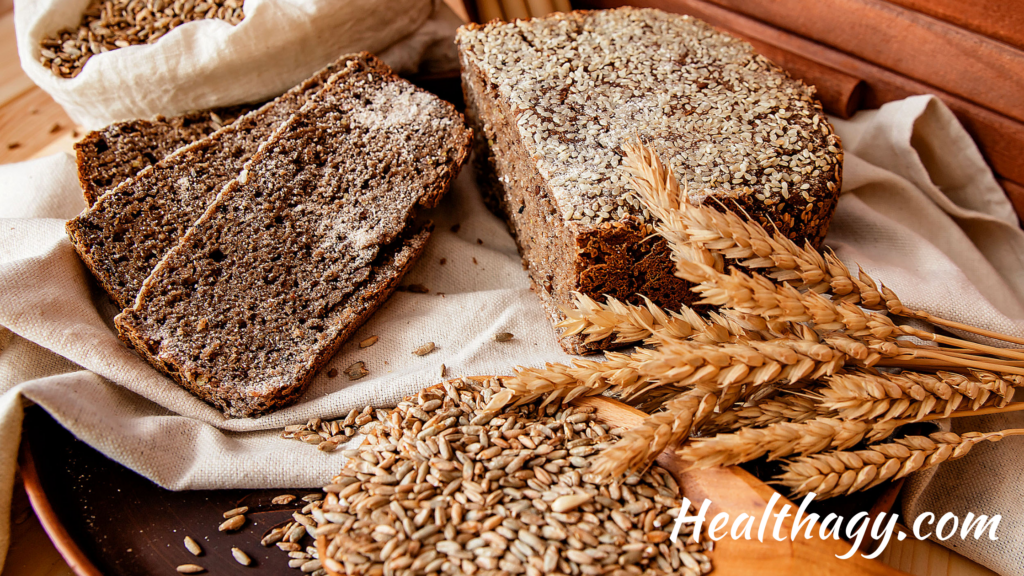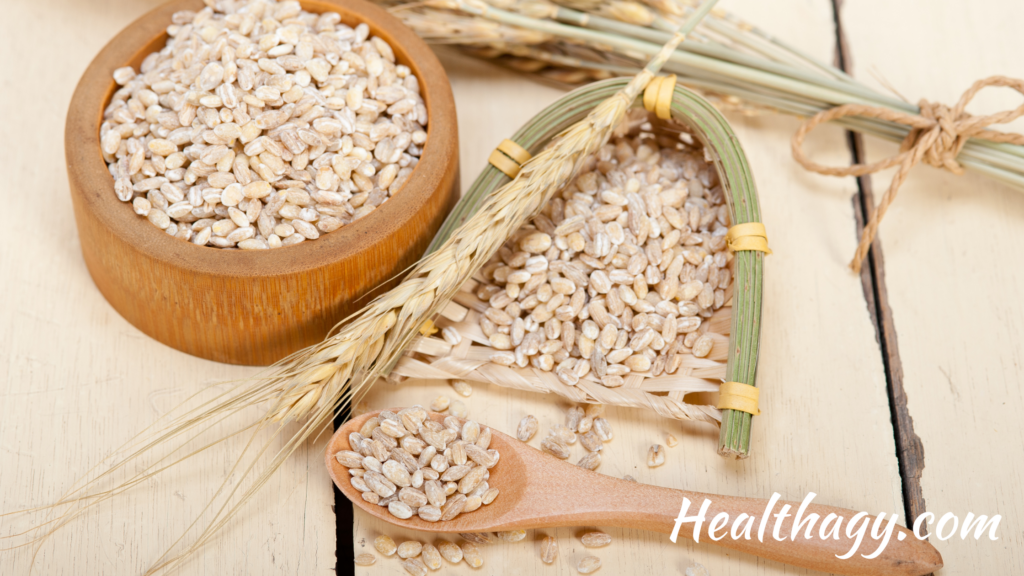
Key Differences Rye vs Barley
The main difference between rye vs barley comes down to taste and nutrients. Rye has a more earthy flavor, while barley has a nuttier flavor.
Rye grains have more phosphorus, potassium manganese, and folate than hulled barley. Hulled barley has more dietary fiber, protein, calcium, iron, magnesium, zinc, copper, selenium thiamin, riboflavin, niacin, and vitamin B6 than rye grains.

What is Rye?
One of the most common foods rye is known for is rye bread, made with rye flour. Made with whole grains, it’s a favorite of anyone who enjoys a more healthy, hearty, earthy-flavored bread. Rye grains are also commonly used in making rye whiskey.
Rye originally grew hidden in wheat fields as a wild plant. Over time it began to mimic wheat as a way to “camouflage itself.” Since it has a high tolerance to grow in cold climates, it eventually became what we now know as cereal grains. Cereal crops are seeds from the family of grasses that are part of the foundation of the world’s food supply, such as wheat, rice, corn, barley, and oats.
Rye bread has a lower gluten content than whole wheat flour or all-purpose flour, but those with a gluten sensitivity should still avoid it.
Rye Bread Taste
Rye bread is a heavier and more dense, dark bread. It has an earthy flavor with hints of mushroom.
When it comes to rye in whiskey, the more rye there is, the spicier the whiskey tastes.
Nutritional and Health Benefits of Rye
As a whole grain, rye is full of fiber, containing more fiber than many other common cereal grains. Fiber helps support healthy digestion and helps you feel fuller longer.
Whole grain rye bread is a better option than white wheat bread for people looking to support heart health and those with diabetes. Rye bread is a whole grain and anti-inflammatory, so it affects blood sugar levels less than white flour products.

What is Barley?
Barley is a versatile grain eaten as breakfast cereals, a rice substitute, or added to salads and soups. It is also used in making alcoholic drinks and used in feeding livestock. Barley is grown in many different parts of the world and is one of the world’s most common grains, trailing behind wheat, rice, and corn.
Barley is a more nutritious grain than wheat. It does contain gluten, but not as much as wheat does. Barley flour will not rise as much as wheat flour in baking since it has less gluten, making it an excellent option for flatbread and unleavened bread.
Some people may also find barley easier to digest than wheat as it has less gluten than wheat. However, since it still does contain gluten, people with gluten sensitivity or celiac disease should avoid it.
Varieties of Barley
Barley is part of the grass family, the part of barley that we eat are the seeds. Like other grains, the barley seed comprises three main parts, the germ, the endosperm, and the husk.
The two types of barley are pearled barley, hulled barley, and an in-between option, semi-pearled barley. There is also barley that is used for animal feed, but we’ll focus on human consumption here.
Hulled barley is a whole grain and the least processed option as it has the most nutritional value. Pearled barley is a refined grain, being more processed with the fibrous outer hull removed and some or all of the bran layer; it is lighter in color. You can also find semi-pearled barley, which is a medium brown, lighter in color than hulled barley and darker than pearled barley.
Barley Taste
Barley has a flavor and texture that is similar to brown rice, mild with a slightly nut-like flavor.
Nutritional & Health Benefits of Barley
Whether you choose hulled or pearl barley or in between, they all have great nutritional value. As with all grains, whole grains will always be the healthiest option.
Barley is an excellent source of plant protein. One cup of uncooked hulled protein boasts 23 grams of protein, and one cup of raw pearled barley contains 20 grams of protein.
Beyond being a great source of protein, barley is also an excellent source of fiber. Fiber helps support appetite regulation which may support weight loss. Fiber also promotes healthy blood sugar levels and digestion.
Barley is also a great source of dietary fiber. Fiber helps you feel fuller and longer, which can help support weight loss. Fiber also helps support healthy digestion and promotes healthy blood sugar levels.
Barley offers several other vitamins and minerals- such as some B vitamins, particularly vitamin B6, which support a healthy immune system and brain health. Barley also contains manganese, selenium, iron, and phosphorous.
Nutritional Profile Rye vs Barley
To compare, we’ll look at the key nutritional values of one cup of rye grain and one cup of hulled barley. One cup of rye grain is 169 grams, and one cup of hulled barley is 184 g.
| Rye Grains | Hulled Barley | |
| Calories | 571 | 651 |
| Total Carbohydrate -Dietary fiber -Sugar | 128 g 25.5 g 1.66 g | 135 g 31.8 g 1.47 g |
| Protein | 17.4 g | 23 g |
| Total Fat Saturated Fat | 2.76 g 0 g | 4.23 g 0 g |
| Calcium | 40.6 mg | 60.7 mg |
| Iron | 4.44 mg | 6.62 mg |
| Magnesium | 186 mg | 245 mg |
| Phosphorus | 561 mg | 486 mg |
| Potassium | 862 mg | 832 mg |
| Zinc | 4.48 mg | 5.1 mg |
| Copper | 0.62 mg | 0.916 mg |
| Manganese | 4.36 mg | 3.57 mg |
| Selenium | 23.5 µg | 69.4µg |
| Thiamin | 0.534 mg | 1.19 mg |
| Riboflavin | 0.424 mg | 0.524 mg |
| Niacin | 7.22 mg | 8.46 mg |
| Vitamin B6 | 0.497 mg | 0.585 mg |
| Folate | 64.2 µg | 35µg |
Rye grains and hulled barley are great whole-grain nutritional options and a better choice than wheat grains for breads, baking, and even whiskey!
Overall hulled barley comes out ahead in more nutrients than rye grains do. Hulled barley has more dietary fiber, protein, calcium, iron, magnesium, zinc, copper, selenium thiamin, riboflavin, niacin, and vitamin B6 than rye grains. Rye has more potassium, manganese, and folate than hulled barley.
However, they are both excellent sources of nutrients and make a great addition to a healthy diet.
Read More:
Karla Kueber is a Certified Evidence Based EFT Practioner and Health Coach, with a double Masters Degree in Education. She works with people to overcome emotional eating, curb cravings, and overcome resistance to eating new healthy foods. You can learn more about coaching with her here.